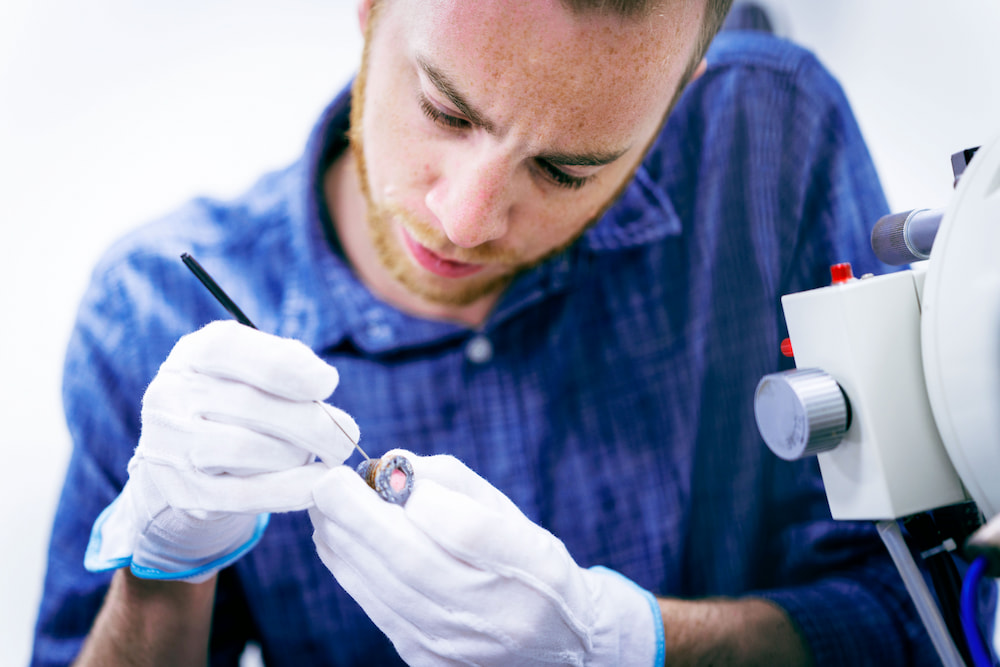Methods & requirements
VDA 233-102 test
Corrosion testing determines the resistance of materials to corrosion under specific environmental conditions, like elevated temperature and humidity. Other accelerating factors can be presence of chemicals and the pH-level of the salt fog and pluviometry.
There are mainly two different types of corrosion test standards, field performance and accelerated corrosion resistance tests. Cotec Labs is focused on different types of standardized corrosion tests.

VDA 233-102 test, Cyclic corrosion testing of material and components in automotive construction
The VDA 233-102 specification has been created jointly by the steel, aluminium and automotive industry. VDA 233-102 is a specification that provides an accelerated test procedure for the assessment of corrosion behaviour of components and of corrosion protection provided by coating systems. The accelerated test covers in particular the delamination/corrosion creep around a defined artificial defect in a coating as well as surface and edge corrosion on special test plates, bonding specimens or components. Compared to tests with higher humidity available a decreased ageing rate of adhesive is to be expected. This laboratory-scale cyclic corrosion test is suitable for assessing perforation corrosion in flanged areas or gaps and of unpainted surfaces. The VDA 233-102 method induces corrosion processes and generates reproducible corrosion patterns which correlate well with the results obtained in natural weathering tests and driving operation. In particular, the corrosion patterns for substrate steel, galvanised steel and aluminium closely reflect real-life phenomena. The test method is based on real corrosive climate condition and delivers differentiated results for a large number of uses in automotive applications.
Test method for corrosion test by VDA 233-102
The correct execution of VDA 233-102 test requires programmable test chambers allowing continuous programming of temperature, relative humidity and salt spray.
The test should be carried out in a combination chamber allowing all programmed climates to be run, in order to ensure minimal disturbance of the climates.
Test procedure
The typical test duration is six full test cycles. The test duration is to be stipulated upon a case-by-case basis and the test duration can be changed until it is possible to draw conclusions concerning the corrosion behaviour.
Test cycle
A full test cycle lasts 7 days and is build up by three cycles, each of which is conducted for a period of 24 hours.
- A: Salt spray cycle: Temperature (ranging between 35 and 50 °C) and humidity (ranging between 50 and 100%) are altered during the 24-hour period, whereas the specimens are continually sprayed with a 1% sodium chloride solution for the first three hours at 35 °C.
- B: Observation cycle: Temperature and humidity are included in the first cycle, but here the salt spray test is replaced by a three-hour dry phase in which the temperature and humidity are reduced. This way the specimens can be inspected in dry condition.
- C: Cold cycle: This is a five-hour sub-zero phase at –15 °C. It ensures that all climates are included.
Within a given testing week, the three tests are performed in a prescribed sequence: A-B-A-C-A-B-B. The testing ensures that true-to-life corrosion situations are created, particularly for the substrates of non-galvanized steel, galvanized steel and aluminum. The testing methods were derived from true-to-life corrosive environments and provide significant results for a large number of applications in the automotive industry.
Our most common corrosion tests
Talk to our corrosion test experts
Are you interested in conducting a test? Feel free to contact us – we’re here to assist you every step of the way.

Joakim Ekström

Erik Waltersson
Accredited by SWEDAC
and part of the international accreditation network ILAC

Methods and requirements
We offer a comprehensive and continuously expanding lab-scope of over 300 available test methods and standards.

Laboratory and equipment
Cotec Labs provides a 1200 sqm laboratory facility. Take a closer look at our laboratory
and equipment.

Quality and certificates
We are accredited by Swedac and part of the international accreditation network ILAC.


